Easy High-Heat Roast Turkey with Gravy
This post may contain affiliate links. Read my full disclosure policy.
Ideal for turkeys under 14 pounds, the high-heat method guarantees a juicy and crisp-skinned turkey.
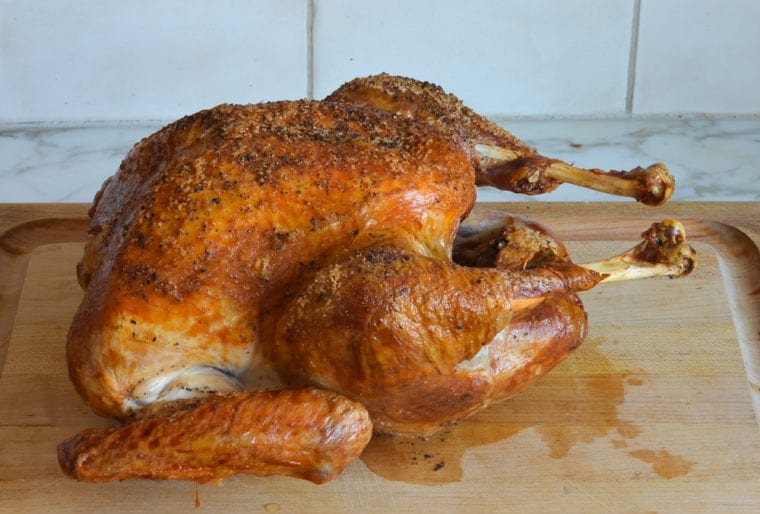
The high-heat roasting method is one of my favorite ways to cook a turkey. The prep time is minimal, the cooking time is short, and the turkey emerges from the oven juicy and crisp-skinned. The only drawback is that the high heat can cause a little smoke in the kitchen, so be sure your oven is spotless prior to cooking — and while the bird roasts, turn on your exhaust fan and crack a window. This cooking method only works for turkeys under 14 pounds. For larger birds, I recommend this dry-brined turkey recipe.
For Thanksgiving, I typically make one roast turkey along with a rolled stuffed turkey breast (a make-ahead family favorite) so we have variety and plenty of leftovers. Finally, if you’re a turkey novice or cooking a turkey feels intimidating, check out my best turkey advice; it will make you feel better!
What you’ll need to make roast turkey with Gravy
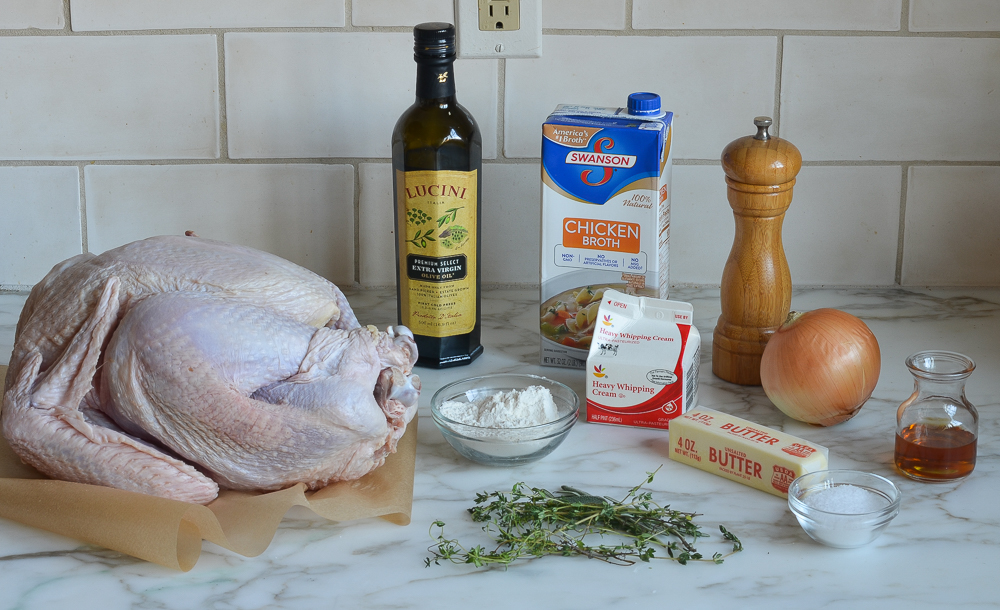
How to make roast turkey with Gravy
To begin, remove and discard truss that holds turkey legs together. Trim off and discard any excess fat in the neck or body cavity. Remove giblets and neck; discard or save for stock.
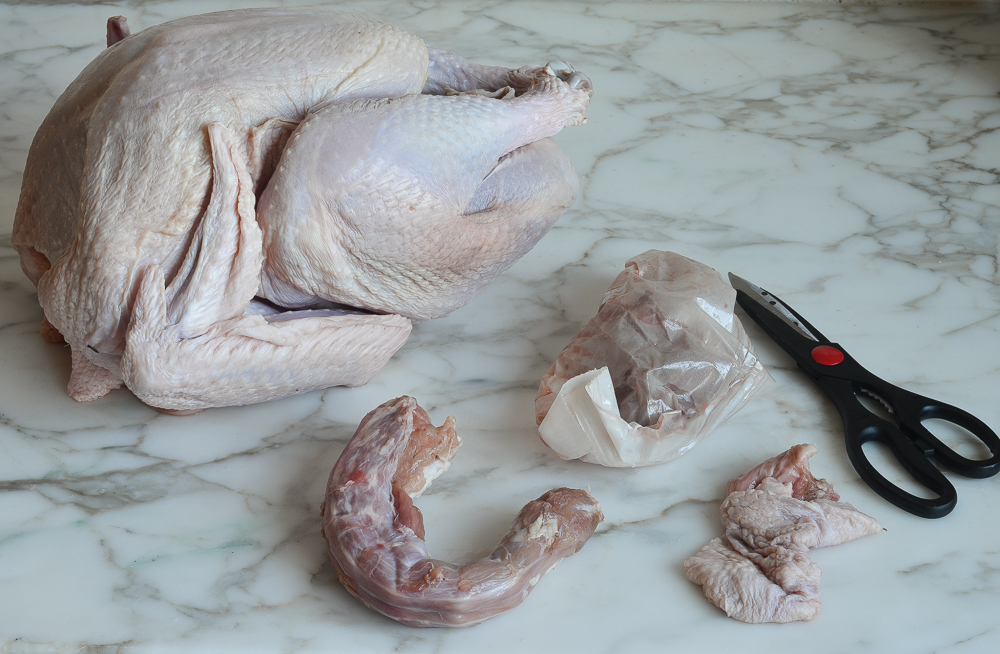
Rinse turkey inside and out with warm water. Pat dry with paper towels. Place a V-shaped rack in a 13 x 16 x 3-inch heavy stainless-steel roasting pan. (Do not use a dark roasting pan or a disposable aluminum pan.)
Rub the turkey skin all over with the olive oil and sprinkle with the salt and pepper. Set the bird breast-side-up on the rack. Pull the wings away from the body, then firmly twist them to push the wing tips under the bird.
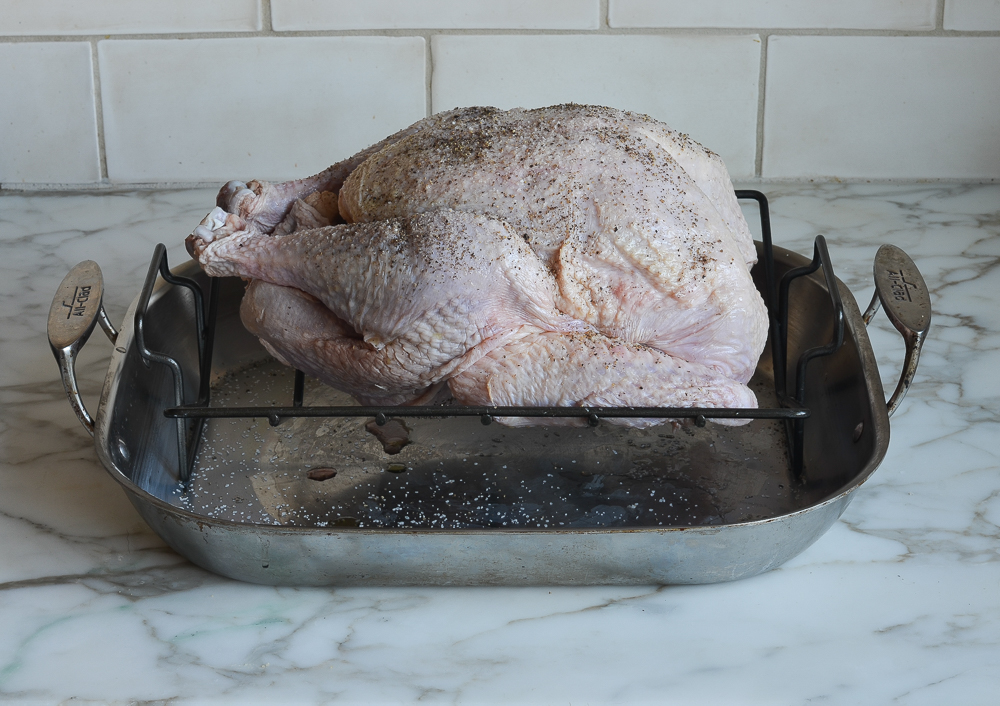
Using aluminum foil, form caps over the tips of the end of each drumstick. (Do not tie the legs together, add stuffing, or close the body cavity.) Insert a digital leave-in meat thermometer near the center of the breast through thickest part until the tip touches the bone. Turn on your exhaust fan and crack a kitchen window.
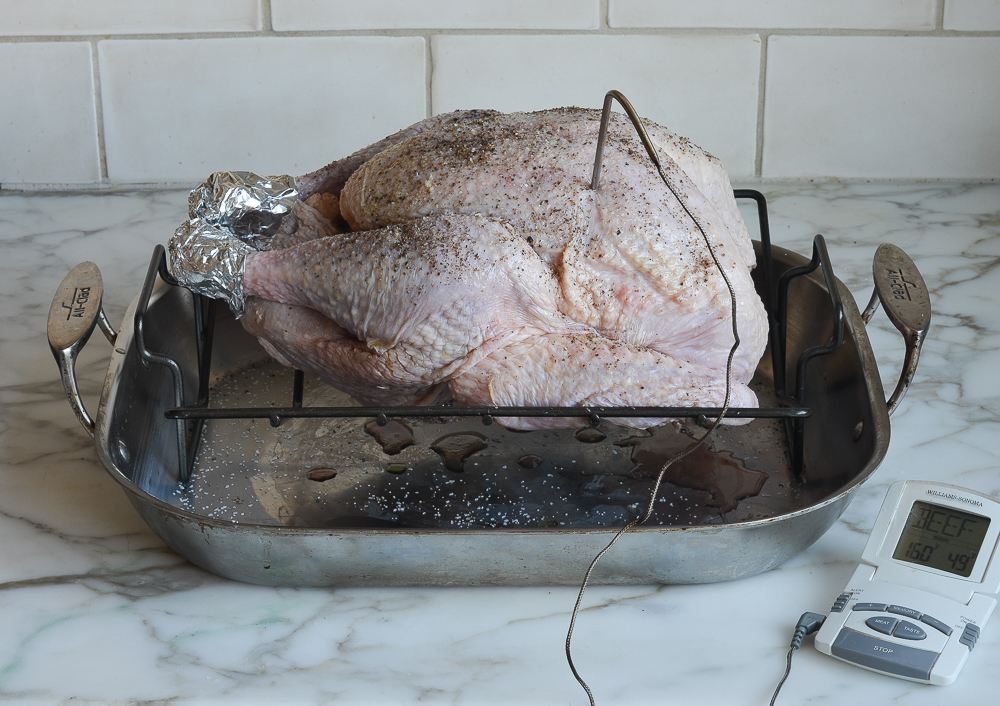
Place the turkey in the oven and roast, without basting, until the thermometer reaches 160°F, 1 to 1-1/2 hours. Halfway through roasting time, rotate the pan in the oven to assure even cooking and browning. (If at any point your kitchen gets unbearably smoky or the fat is spitting, pour a cup of tepid water in the roasting pan. Just keep in mind that liquid will create steam, which prevents the skin from getting as crispy.) Remove the pan from the oven.
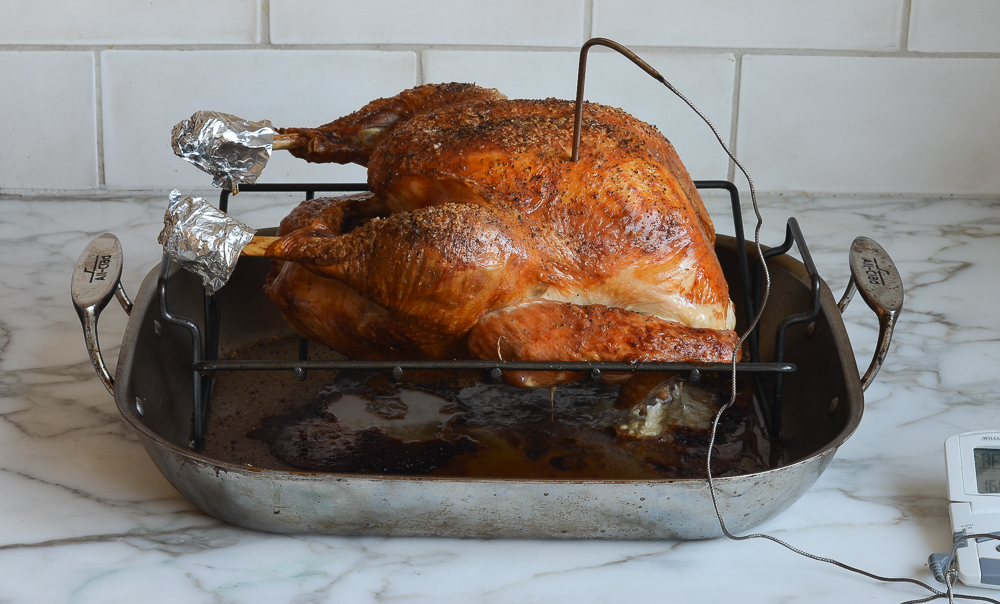 Using oven mitts that you don’t mind getting dirty, carefully tilt the turkey so that the juices from the cavity run into the roasting pan. Transfer the turkey to a platter or cutting board (do not clean the roasting pan), tent the turkey with foil, and let it rest for 20 to 30 minutes. This will allow the internal temperature to reach at least 165°F (the USDA safe-cooking temperature for turkey) and the juices to settle.
Using oven mitts that you don’t mind getting dirty, carefully tilt the turkey so that the juices from the cavity run into the roasting pan. Transfer the turkey to a platter or cutting board (do not clean the roasting pan), tent the turkey with foil, and let it rest for 20 to 30 minutes. This will allow the internal temperature to reach at least 165°F (the USDA safe-cooking temperature for turkey) and the juices to settle.
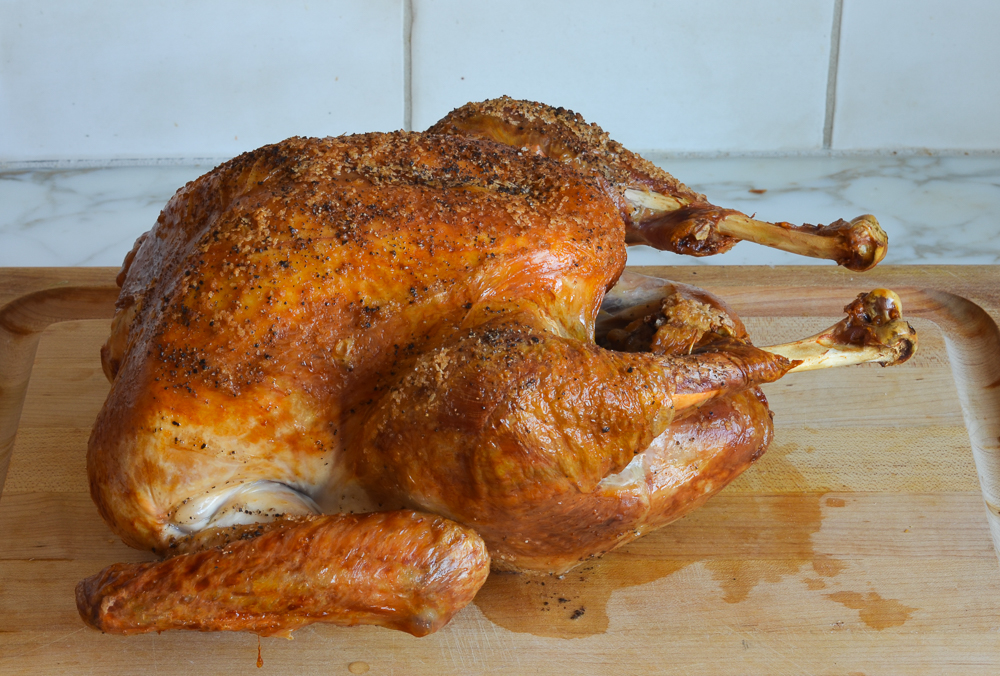
How To Make Gravy
While the turkey rests, make the gravy: Place the roasting pan over a burner on your stove. (Be careful handling the pan, as the handles will be hot.) Skim away any excess fat or solids that have accumulated in the pan.
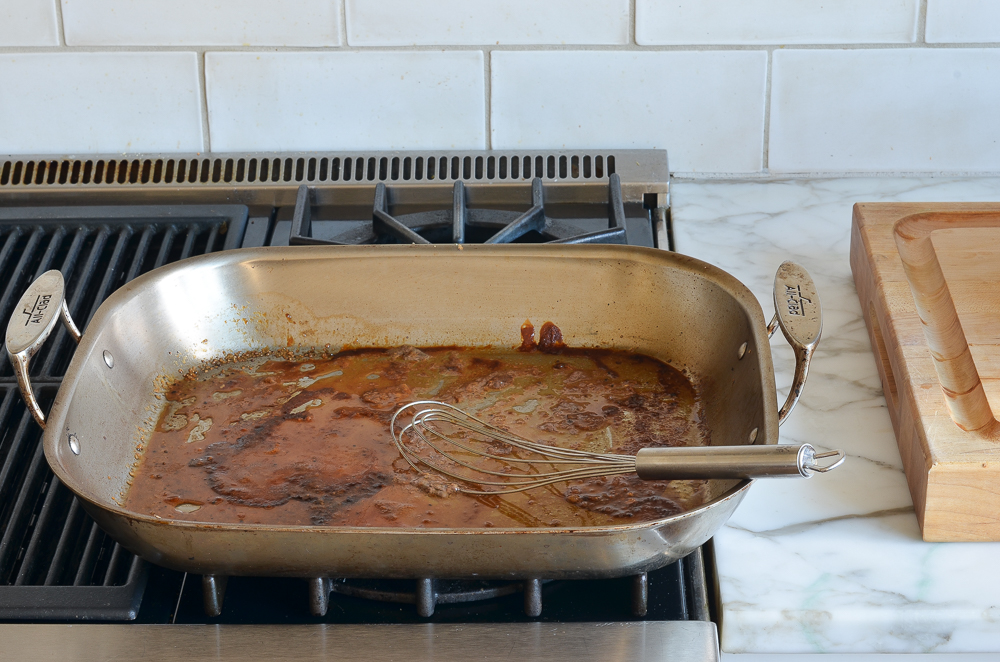
Add the broth and cook over medium heat, scraping the bottom of the pan with a whisk or wooden spoon to loosen any brown bits, until simmering. Turn off the heat and set aside.
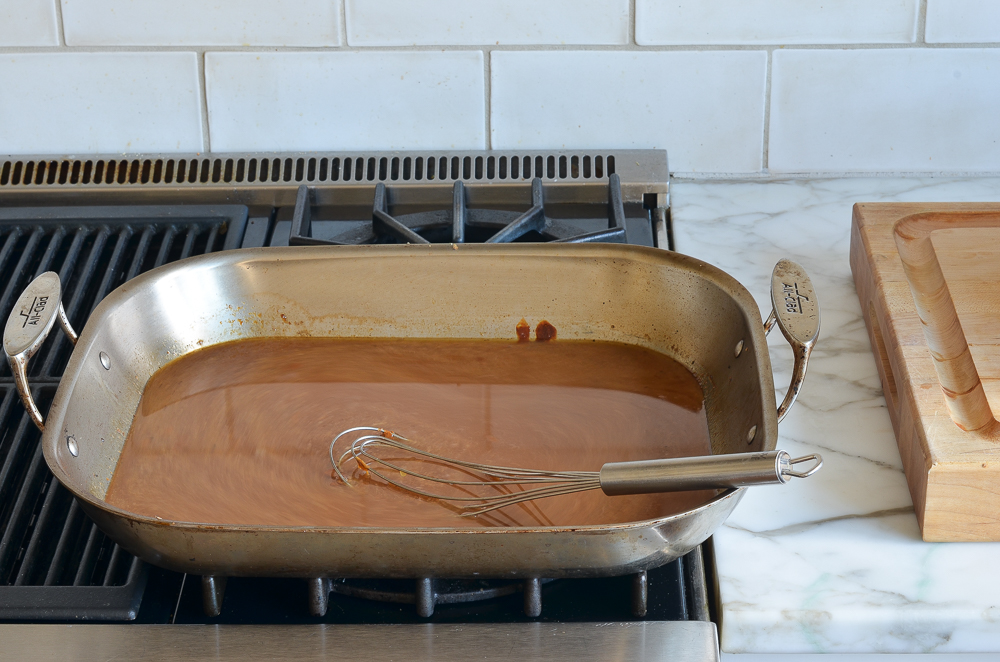
In a medium saucepan, melt the butter over medium-low heat.

Add the onions.
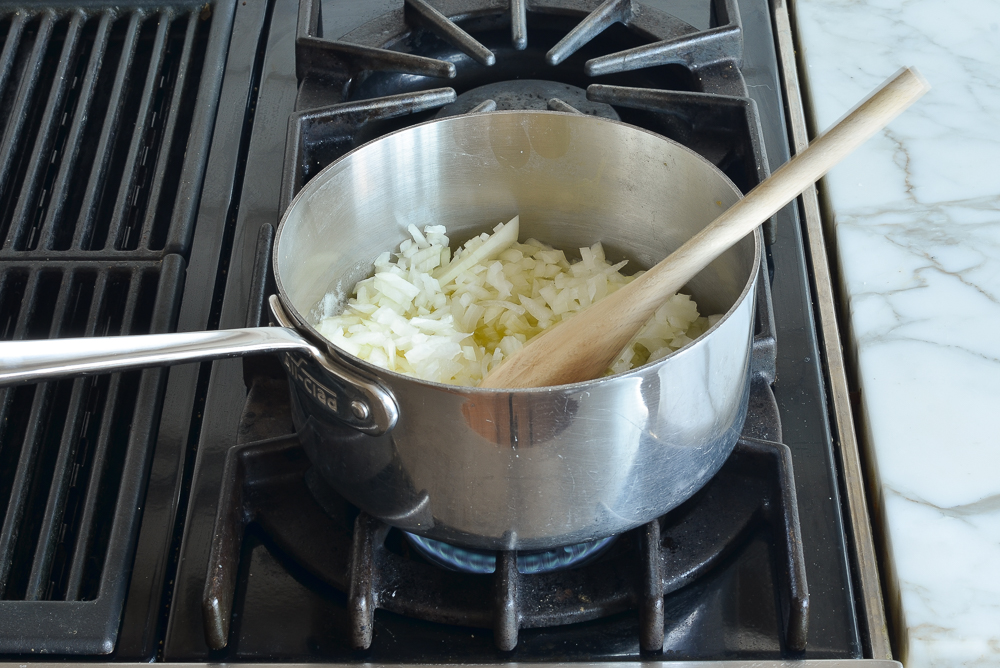
Cook until very soft and translucent, about 15 minutes. Do not brown.
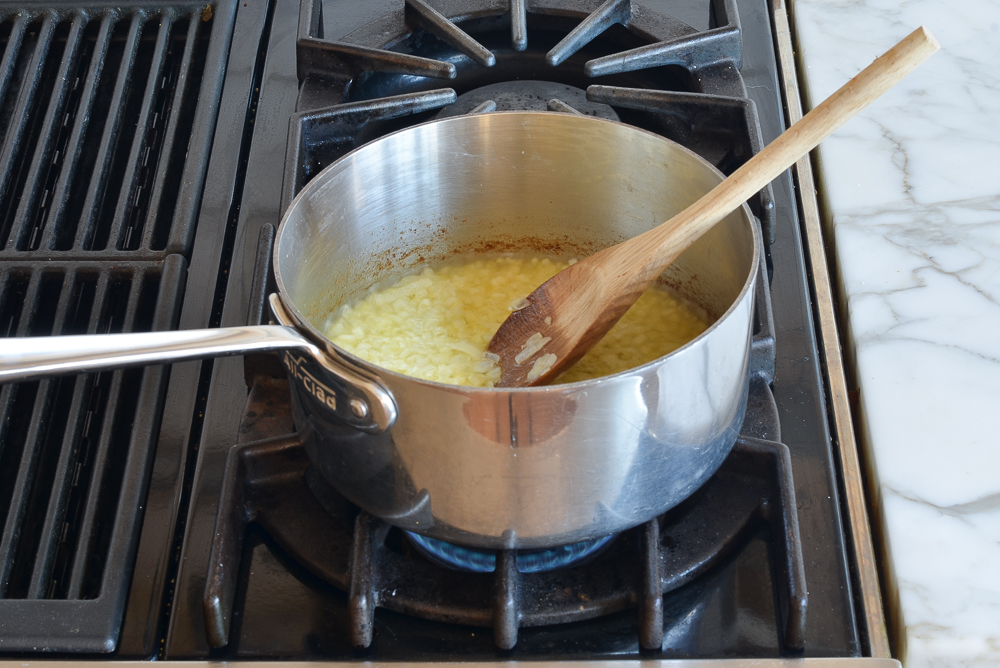
Add the flour.
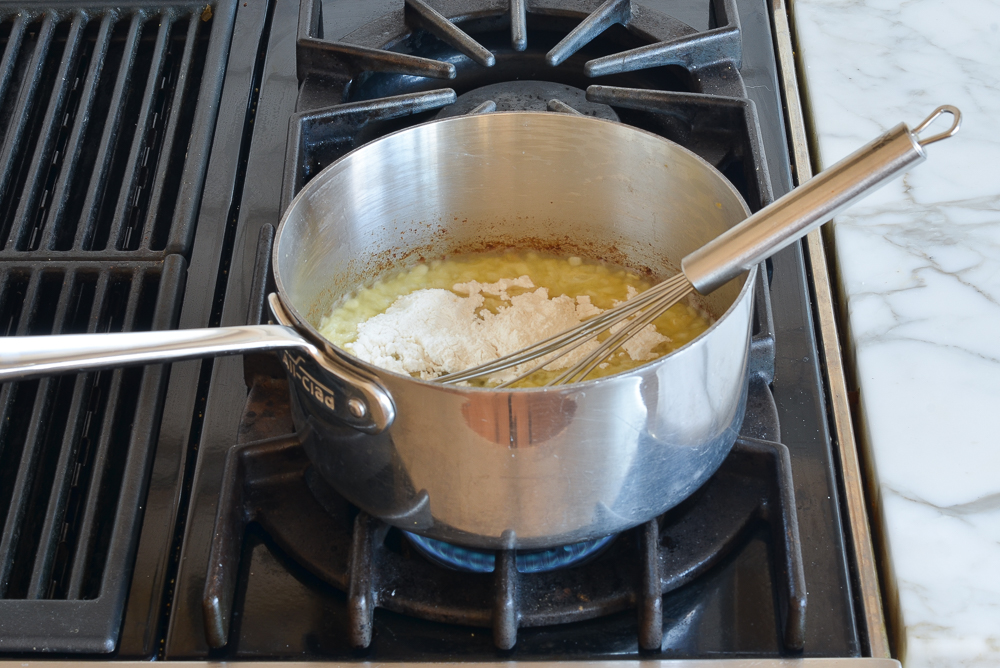
Whisk and cook for 2 to 3 minutes, stirring occasionally.
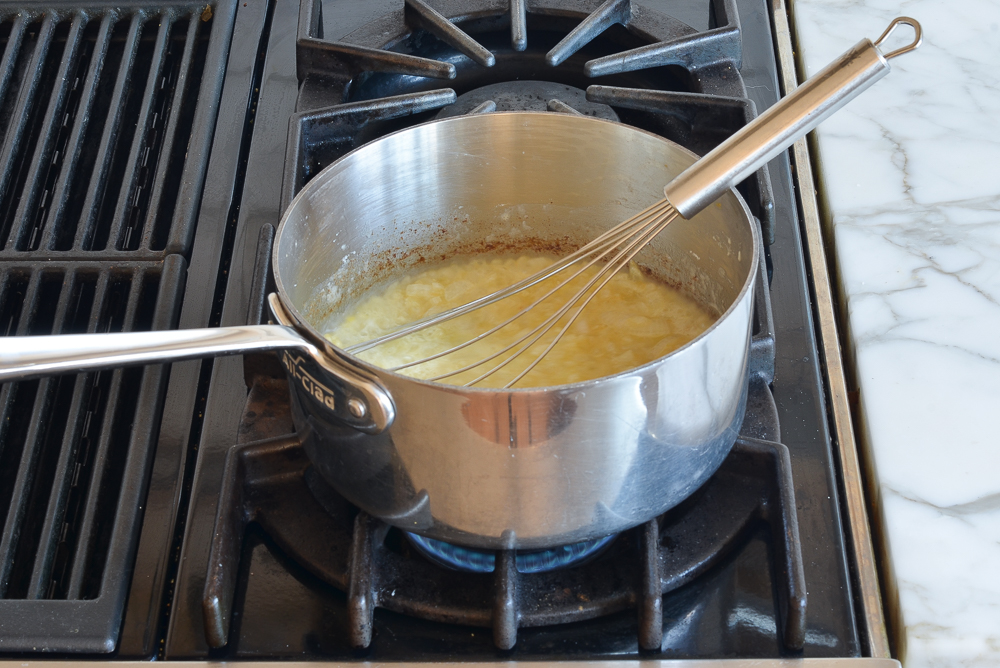
Whisk in the turkey dripping-chicken broth mixture and Cognac and cook, uncovered, stirring occasionally, for about 5 minutes until thickened.
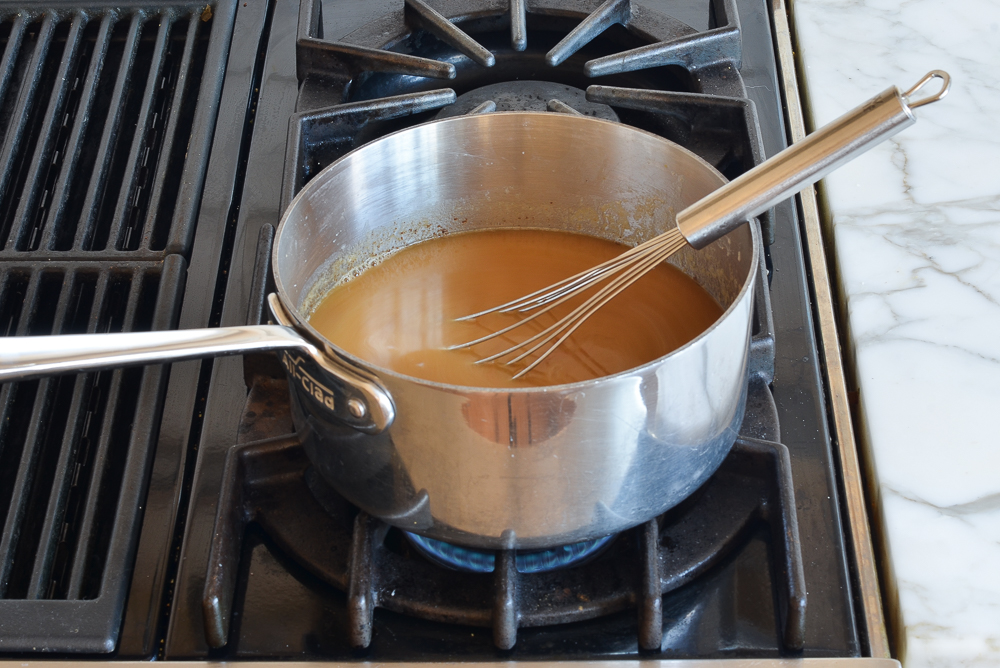
Stir in the cream (if using) and chopped herbs. Taste and adjust seasoning with salt and pepper, if necessary.
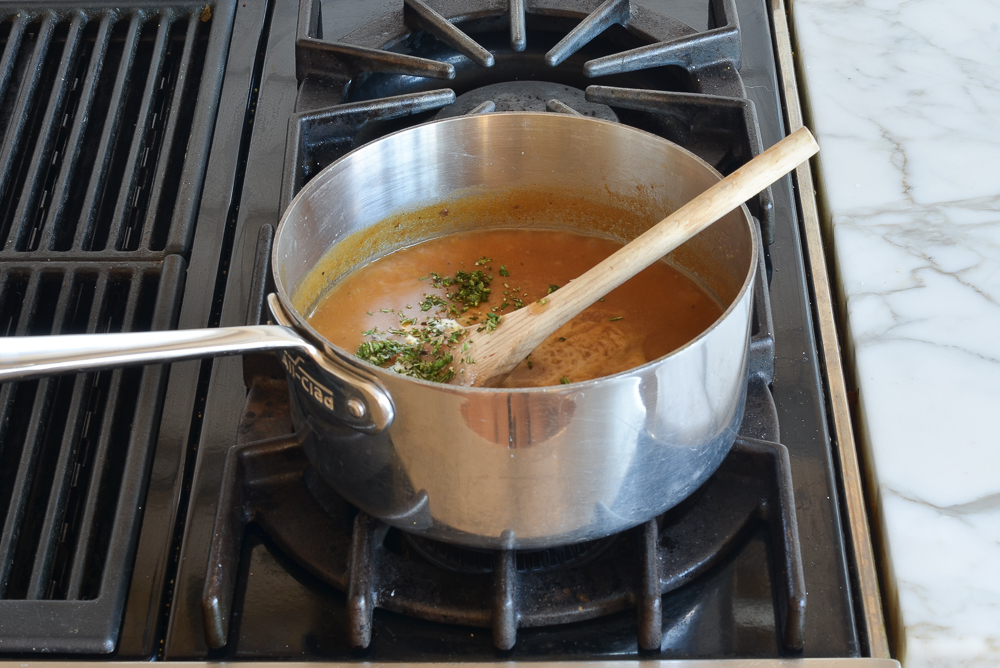
Transfer to a gravy bowl. Carve the turkey and serve with the gravy on the side.
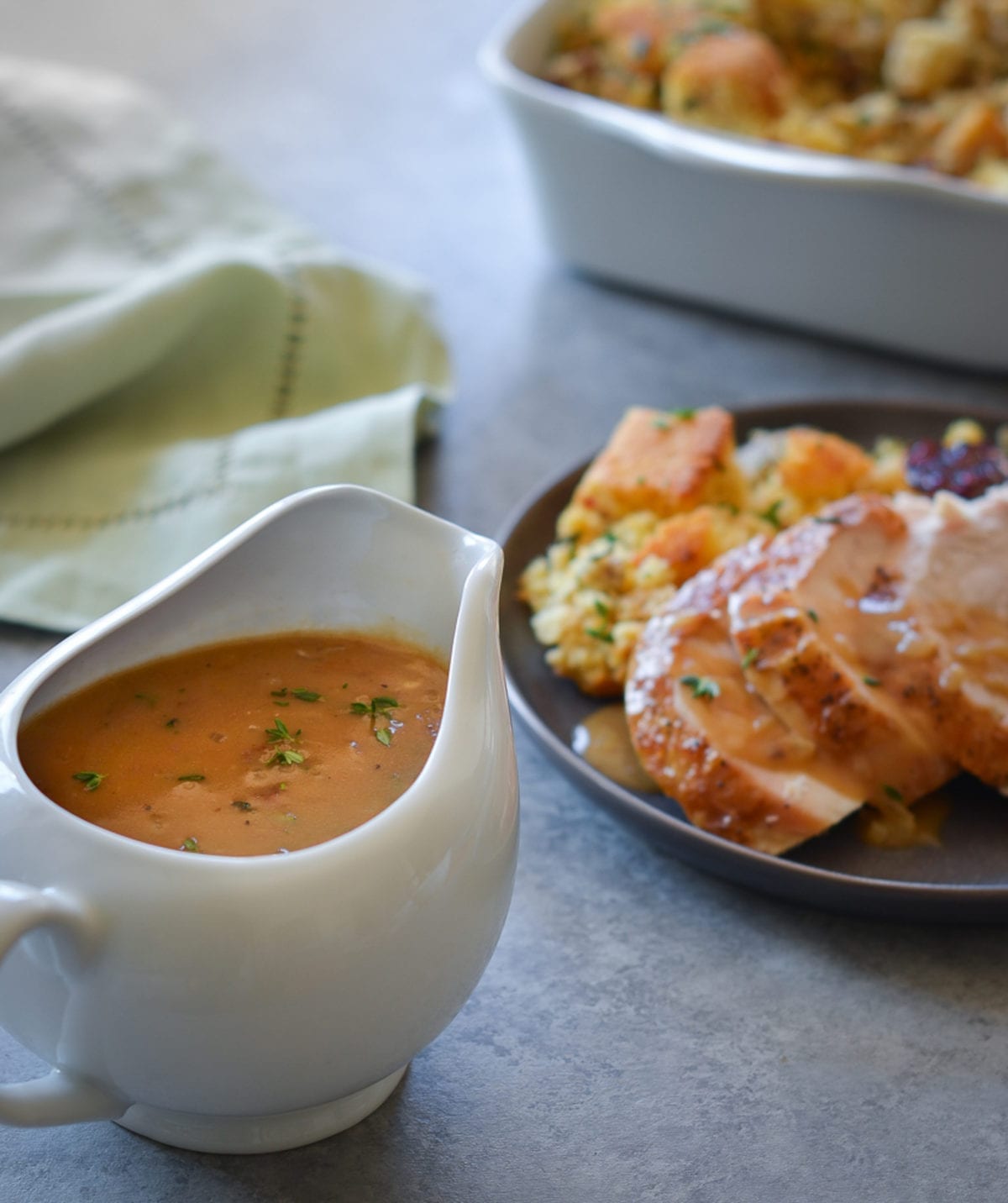
You may also like
- Rolled Turkey Breast with Sausage and Herb Stuffing
- Fresh Orange Cranberry Sauce
- Brussels Sprouts Gratin
Easy High-Heat Roast Turkey With Gravy
Ideal for turkeys under 14 pounds, the high-heat method guarantees a juicy and crisp-skinned turkey.
Ingredients
- 1 fresh turkey (11 to 14 lbs)
- 1 tablespoon olive oil
- 1½ tablespoons kosher salt
- 1 teaspoon freshly ground black pepper
- 2¼ cups chicken broth
- 8 tablespoons (1 stick) unsalted butter
- 1½ cups finely chopped yellow onion, from 1 large yellow onion
- ¼ cup all-purpose flour
- 2 tablespoons Cognac or brandy
- 1 tablespoon heavy cream, optional
- 1 tablespoon chopped fresh herbs (such as thyme, sage, rosemary, or parsley)
You Will Need:
- 13 x 16 x 3-inch heavy stainless-steel roasting pan
- V-shaped roasting rack
- Leave-in digital meat thermometer, like this one
Instructions
- Before cooking, be sure that your oven is VERY clean to prevent smoking. Preheat the oven to 450°F and set an oven rack in the lowest position.
- Remove and discard truss that holds turkey legs together. Trim off and discard any excess fat in the neck or body cavity. Remove giblets and neck; discard or save for stock.
- Rinse the turkey inside and out with warm water. Pat dry with paper towels. Place a V-shaped rack in a 13 x 16 x 3-inch heavy stainless-steel roasting pan. (Do not use a dark roasting pan or a disposable aluminum pan.) Rub the turkey skin all over with the olive oil and sprinkle with the salt and pepper. Set the bird breast-side-up on the rack. Pull the wings away from the body, then firmly twist them to push the wing tips under the bird. Using aluminum foil, form caps over the tips of the end of each drumstick. (Do not tie the legs together, add stuffing, or close the body cavity.) Insert a digital leave-in meat thermometer near the center of the breast through the thickest part until the tip touches the bone.
- Turn on your exhaust fan and crack a kitchen window. Place the turkey in the oven and roast, without basting, until the thermometer reaches 160°F, 1 to 1½ hours. If your oven has hot spots, rotate the pan halfway through cooking to assure even browning. (If at any point your kitchen gets unbearably smoky or the fat is spitting, pour a cup of tepid water in the roasting pan. Just keep in mind that the liquid will create steam in the oven, so the skin won't be quite as crispy.)
- Remove the pan from the oven. Using clean oven mitts (that you don't mind getting dirty), carefully tilt the turkey so that the juices from the cavity run into the roasting pan. Transfer the turkey to a platter or cutting board (do not clean the roasting pan), tent the turkey with foil, and let it rest for 20 to 30 minutes. This will allow the internal temperature to reach at least 165°F (the USDA safe-cooking temperature for turkey) and the juices to settle.
- While the turkey rests, make the gravy: Place the roasting pan on a burner on your stove. (Be very careful handling the pan; it's easy to forget that it's hot.) Skim away any excess fat or solids that have accumulated in the pan. Add the broth and cook over medium heat, scraping the bottom of the pan with a whisk or wooden spoon to loosen any brown bits, until simmering. Turn off the heat and set aside.
- In a medium sauce pan, melt the butter over medium-low heat. Add the onions and cook until very soft and translucent, about 15 minutes. Do not brown. Whisk in the flour and cook for 2 to 3 minutes, stirring occasionally. Whisk in the turkey dripping-chicken broth mixture and Cognac and cook, uncovered, stirring occasionally, for about 5 minutes or until thickened. Stir in the cream (if using) and chopped herbs. Taste and adjust seasoning with salt and pepper, if necessary. Transfer to a gravy bowl.
- Carve the turkey and serve with the gravy on the side.
- Note: Nutritional information is based on an 11-pound turkey with 10 servings.
- Make-Ahead Instructions: If you don't mind losing the crispy skin, the turkey can be roasted and carved ahead of time. Pour a thin layer of the gravy into an ovenproof serving platter. Arrange the carved turkey nicely on top of the gravy; cover tightly with plastic wrap and refrigerate for up to two days. Refrigerate the remaining gravy in a separate container. To reheat: remove the plastic wrap and cover the platter with aluminum foil. Place in a 325°F-oven for 20 to 30 minutes, until the turkey is hot. Reheat the gravy in the microwave or on the stovetop.
Pair with
Nutrition Information
Powered by ![]()
- Per serving (8 servings)
- Calories: 859
- Fat: 39 g
- Saturated fat: 13 g
- Carbohydrates: 7 g
- Sugar: 2 g
- Fiber: 1 g
- Protein: 110 g
- Sodium: 1,386 mg
- Cholesterol: 385 mg
This website is written and produced for informational purposes only. I am not a certified nutritionist and the nutritional data on this site has not been evaluated or approved by a nutritionist or the Food and Drug Administration. Nutritional information is offered as a courtesy and should not be construed as a guarantee. The data is calculated through an online nutritional calculator, Edamam.com. Although I do my best to provide accurate nutritional information, these figures should be considered estimates only. Varying factors such as product types or brands purchased, natural fluctuations in fresh produce, and the way ingredients are processed change the effective nutritional information in any given recipe. Furthermore, different online calculators provide different results depending on their own nutrition fact sources and algorithms. To obtain the most accurate nutritional information in a given recipe, you should calculate the nutritional information with the actual ingredients used in your recipe, using your preferred nutrition calculator.

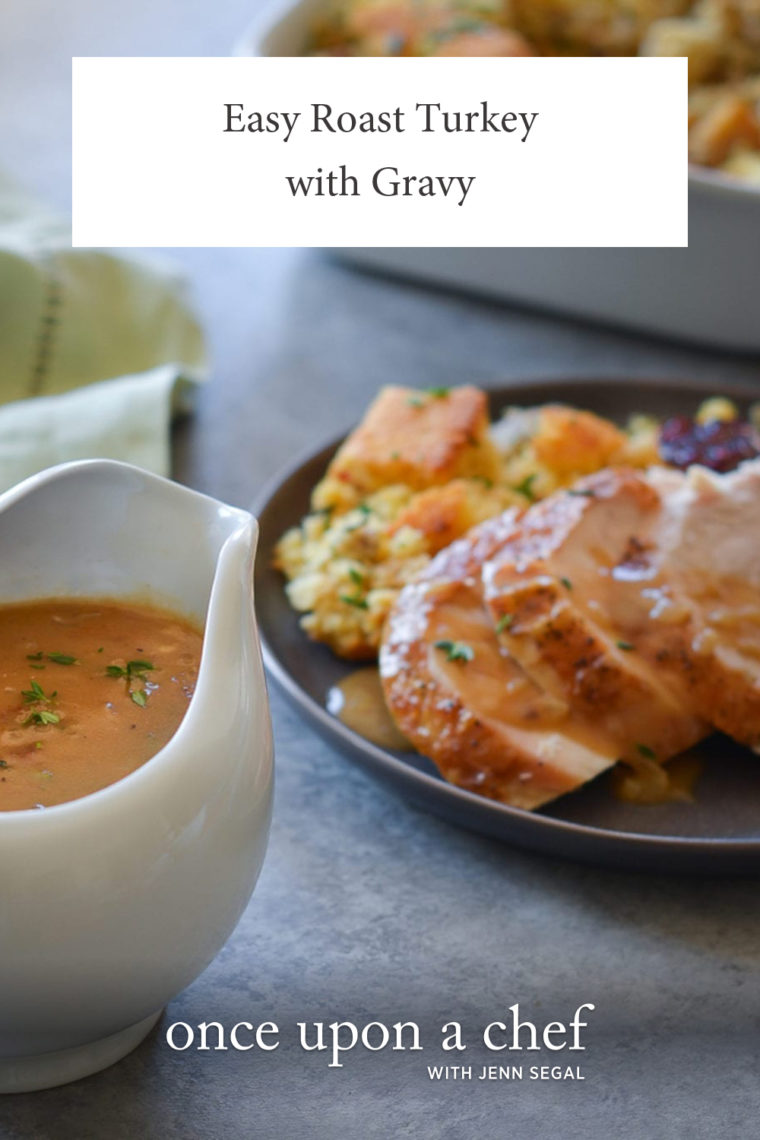
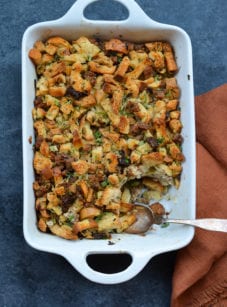
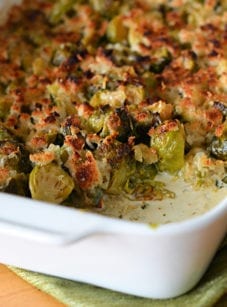
Wonderful recipe. I used an 8lb turkey breast and it came out perfect. Lovely browned skin and moist meat. Much easier than prior recipes that I have followed. I used a fairly heavy, dark roasting pan and did not have any issue with burning/smoke.
Thank you Jenn for providing wonderful recipes.
Do you use convection roast/bake or regular bake?
Thank you.
Hi Paula, I use a regular oven. 🙂
Is the chicken broth regular or low sodium? thanks
Regular 🙂
Hi Jen~ I love everything you make! I have never been disappointed! So thank you!
This year I am making two turkey breasts instead of one large turkey. Since no one in my family eats dark meat, I always end up wasting it. And I hate being wasteful.
Would I be able to roast the turkey breasts using this method? If so, do you have recommendations about time/temp/ roasting pan size?
Thank you!
Hi Kelly, So glad you enjoy the recipes! Yes, you can use this recipe for bone-in turkey breasts. The roasting pan would be the same as well as the oven temp. The timing will depend on the size of the breasts. (Use a digital leave-in meat thermometer and remove it from the oven when the temp reaches 160°F.) Hope you enjoy!
The breasts are about 7lbs each. I have a large roaster and rack- do you think I could put them both on the same one? Also, I was considering making on Wednesday, slicing and reheating Thursday. Do you think this would work, or should I just cook the turkey on Thanksgiving? I am a little nervous… Thanks! And Happy Thanksgiving!
Hi Kelly, Assuming both the breasts fit on the rack and don’t hang over the side of the roasting pan, it should be fine. And it’s perfectly fine to make it a day ahead and then reheat it on Thursday. If you scroll down to the bottom of the recipe, you’ll find some “make-ahead” instructions that should be helpful.
I have an all clad roaster which has a black non-stick finish. It is a nice pan with heating threshold of 500 degrees. Should I adjust temperature of my oven down from 450 to compensate for the black pan? If so, how many degrees? thanks!
I think you’ll be fine with the all-clad roaster, Jackie – but if it starts to smoke, you can reduce the heat 25°F. The pans to really worry about are those light-weight dark and speckled roasters.
I am going to make the Turkey ahead of time this year per your recipe. I see you add a thin of layer of gravy. Other recipes I have found online drizzle chicken stock or turkey stock over. What do you think is best and why?
Hi Betty, You could go either way (or even use a little of both). I prefer to use a little gravy (so long as you have enough to spare) as the turkey picks up the flavor as it sits in the fridge.
Wondering if the cooking time of 1.5 hours holds true for a 20 lb+ bird? I realize the need to use a thermometer as the ultimate guide but just want to ensure I’m putting the turkey in at the appropriate time to serve a planned seated dinner time. Thanks!
Also love your recipes, especially the beef stew!
Hi Linda, This method works best for smaller birds b/c of the smoke issue but it is totally doable with a 20-lb turkey if your oven in clean and you use the right type of roasting pan. Also, be sure that no parts of the bird extend beyond the rim of the pan. And if it starts to get too dark on the top towards the end, just cover it with foil. The cook time for 20-lb bird would be closer to 2 hours. Hope that helps and please let me know how it turns out!
Hi Jenn,
Thanks for your very prompt response! Just picked up my 24 lbs bird. Yikes! Thinking that is way too heavy to attempt the high temp cooking time/method, not to mention the fact that despite well intentioned cleaning it may not be enough to prevent the inevitable smoke factor. That said I will capitalize on all of your other wonderful recipes, stuffing, cranberry sauce, roasted carrots, brussel sprouts et. al.. Thanks again, you make my cooking magic 🙂
Linda
☺️
Linda, how did your turkey turn out? Would love to know as I’m making a 25lb turkey.
Hi Jenn 🙂
I would love to try this recipe but have a dark roasting pan with the v rack. I noticed you said not to use a dark pan, why is that though? Is there some way I can adjust the recipe to still use that type of pan? Thank you for your time and thoughts!
Best wishes,
Natalie
Hi Natalie, What type of dark pan is it? Is it heavy?
Hi Jenn,
Can I stuff aromatics inside of the turkey…onion, orange, bay leaves? Will that change the cooking time much? Also do you recommend regular roasting or convection roasting. My oven has both functions.
You are our absolute go to resource for fabulous, never fail recipes…both your website and your terrific cookbook. Thank you!
Happy Thanksgiving,
Leslie
Hi Leslie, I don’t think the aromatics will change the cooking time much. And I develop and publish all my recipes using the regular/conventional setting as that’s what most people have (so I’d stick with that for the most predicatable results). Enjoy! 🙂
Maybe it’s me, but nowhere do I see what temp to set my oven on. Help!
Hi Mona, It’s in the first step – 450°F. 🙂
Jenn – We always roast our turkey on high heat and it is always great and never takes a long time to roast even a very large bird – so I completely agree with you. It is the best way! But I am curious why you say not to use a dark colored pan? We have been using a dark Caphalon roasting pan for years. How will the light colored pan make a difference? Also can the gravy be made gluten free using something other than flour as a thickener? Thanks!
Hi Kathy, Dark metal absorbs and distributes heat more quickly than lighter-colored pans so this can cause the burning/smoking I mentioned. But using a heavy metal pan is the most important thing — and no need to change what works! You could skip the flour and thicken the gravy with cornstarch — just mix it with some water and whisk in at the very end. I’d start with 1.5 tablespoons cornstarch (mixed with a little cold water til smooth), simmer to thicken, and then add more if necessary. Hope that helps!
Yes, cornstarch is a lovely way to make gluten free gravy, just make sure it is a brand that claims to be gf. I use Rumford because it has the gf stamp on the container plus it is aluminum free.